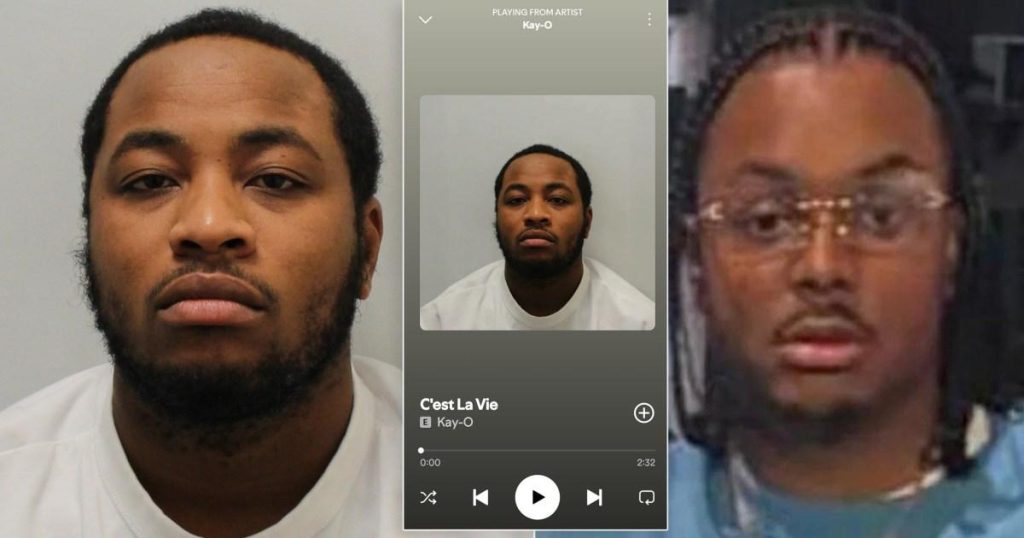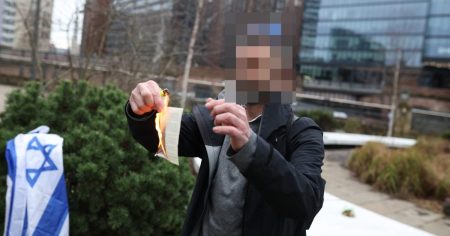Paragraph 1: The Crime and the Sentence
Kammar Henry-Richards, a 26-year-old known in the drill rap scene as Kay-O, was convicted of the murder of Kacey Boothe, a rival gang member. The fatal shooting took place outside a community center in Walthamstow, north-east London, during a children’s party in 2022. Henry-Richards, along with three accomplices, was sentenced to life imprisonment, with a minimum term of 37 years, on the morning of January 14th. This brutal act of violence ended a young life and tragically marred a community gathering. Henry-Richards’ criminal actions transitioned him from a rising figure in the music world to a convicted killer serving a lengthy prison sentence at HMP Belmarsh, a high-security facility.
Paragraph 2: The Song from Behind Bars
Remarkably, just hours after receiving his life sentence, a new Kay-O song titled "C’est La Vie," French for "that’s life," appeared online at 7:30 pm on the same day. This rapid release raised immediate questions about how Henry-Richards was able to record and release music while incarcerated. The song’s lyrics boasted about his continued ability to generate income from music streaming and alluded to handling contraband within the prison walls. Lines such as "I can still run up streams and make some record sales" and "True, the dream is getting rich it doesn’t have to end in jail" fueled speculation and controversy. The audacious nature of the song’s release and its content sparked outrage and concern over the apparent ease with which a convicted murderer could seemingly continue his music career from within a high-security prison.
Paragraph 3: Profiting from Murder? The Financial Implications
The "C’est La Vie" track garnered considerable attention, accumulating 125,000 plays on Spotify, which translated to an estimated £400 in royalties. Additionally, a video uploaded by associates to Henry-Richards’ YouTube channel reportedly amassed hundreds of thousands of views and even briefly ranked 16th on YouTube’s trending list, potentially generating further income. Though YouTube subsequently removed the video, the financial implications of a convicted murderer potentially profiting from music released after his conviction ignited a public debate about the ethics and legality of such earnings. The apparent ease with which the song was disseminated and its potential to generate revenue raised concerns about security breaches within the prison system and the exploitation of digital platforms.
Paragraph 4: The Investigation and Removal Request
The Ministry of Justice launched an investigation into the circumstances surrounding the recording and release of the song. While there was no initial evidence suggesting the song was uploaded directly from within the prison, the ministry formally requested its removal from streaming platforms. The incident brought to light the challenges posed by technology and social media within the prison environment, particularly regarding the control and monitoring of inmate activities. It also raised questions about the potential for prisoners to circumvent restrictions and continue engaging in illegal or unauthorized activities.
Paragraph 5: The Technical Aspects and Prison Regulations
The quality of the vocals on "C’est La Vie" suggested they were recorded using a mobile phone or digitally manipulated to mimic such a recording. Possession of mobile phones is strictly prohibited in prisons, as they can facilitate illegal activities, including communication with outside accomplices and the coordination of criminal enterprises. The recording raised concerns about the potential breakdown of security protocols within HMP Belmarsh and the possibility of corrupt practices enabling inmates to access prohibited technology. Henry-Richards’ lyrics referencing contraband further highlighted these security concerns and the potential for illegal activities to thrive within the prison walls.
Paragraph 6: The Aftermath and Broader Implications
Following the controversy, Henry-Richards received a lifetime ban from operating a YouTube account. The incident prompted wider discussions about the regulations governing prisoners’ rights to earn money, particularly through creative endeavors like music production. It highlighted the complex legal and ethical considerations surrounding the ownership and distribution of creative works produced by incarcerated individuals. While the Ministry of Justice asserted that prisoners found breaking the rules would be punished, the incident underscored the need for stricter regulations and enhanced security measures to prevent similar occurrences in the future. It also raised fundamental questions about rehabilitation versus retribution within the justice system and the potential impact of such incidents on victims’ families and the wider community.











